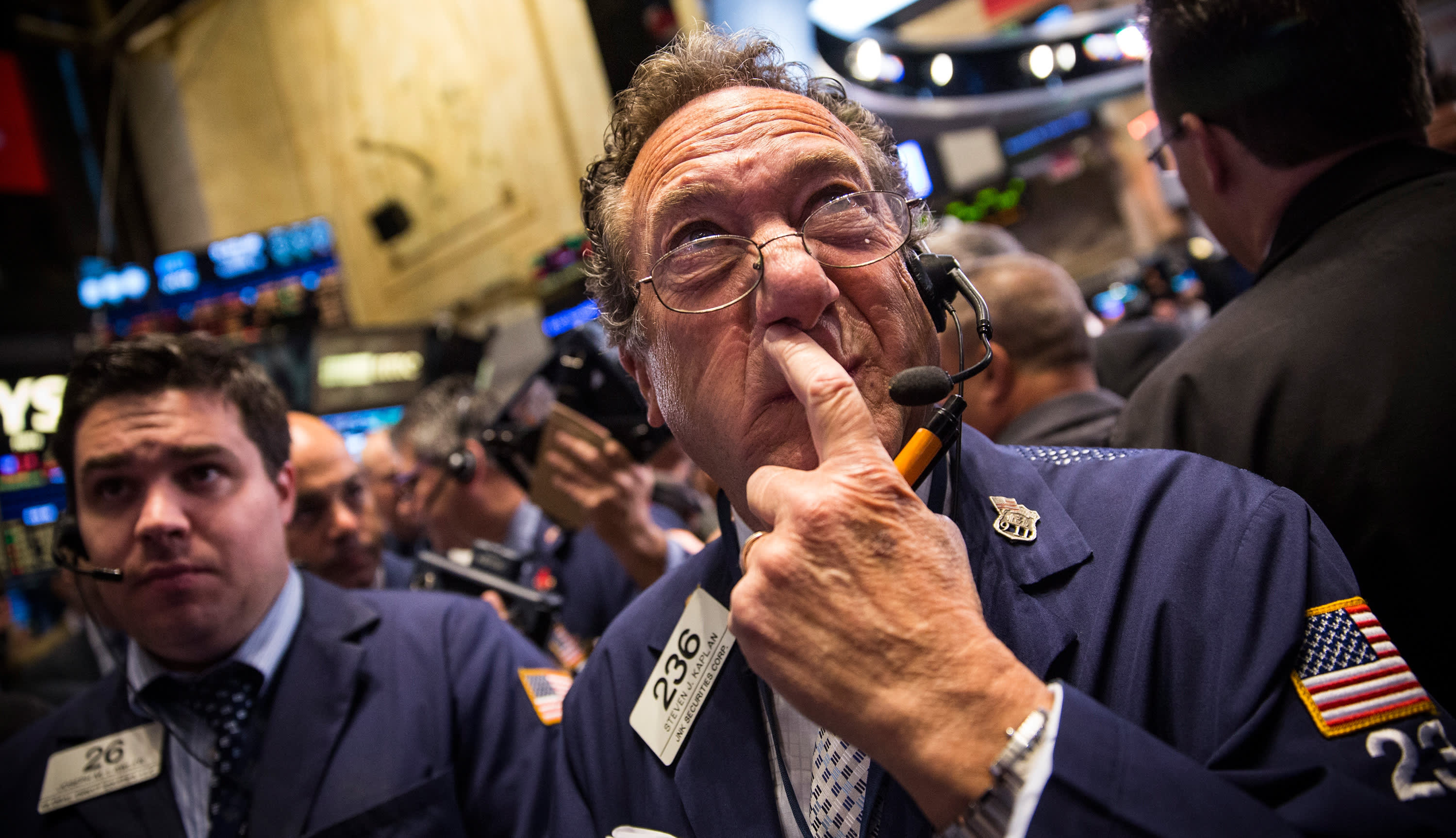Traders work the floor of the New York Stock Exchange.
Getty Images
This stock market rally to records is starting to look shaky.
The S&P 500 refreshed its record again on Tuesday ahead of an expected rate cut from the Federal Reserve, but looking under the hood, investors are increasingly flocking to one of the safest pockets of the market — defensives.
Health care stood out as the best-performing sector on Tuesday, lifted by Pfizer, Merck and HCA‘s earnings beats. Consumer staples and real-estate stocks also outperformed. However, growth and more cyclical names — tech, communication services and consumer discretionary — have started to show signs of weakness.
“The S&P 500 is back at all time highs but with even greater defensive leadership it may warrant investor caution with respect to a growth reacceleration,” Mike Wilson, Morgan Stanley’s U.S. chief equity strategist, said in a note to clients on Monday.
The recent rotation into value from momentum has given beaten-down stocks a chance to shine, but it also serves a warning sign as stocks with superior growth leading the market’s bull run have begun to slow down. Some of the most adored FAANG names — Amazon and Google parent Alphabet — both disappointed on their quarterly earnings.
Pfizer and Merck jumped 2.8% and 3.9% respectively Tuesday on strong earnings, while all of the FAANG names were in the red. Alphabet and Apple both fell about 2%.
“People had aggressively pushed cyclicals higher over the past two weeks,” said Tom Essaye, founder of the Sevens Report. “But in order for that to work out beyond the short term, we need to see economic data get better, and that’s not really happening.”
Investors know it all too well that record highs have barely been a all-clear sign. Just days after the S&P 500 last hit a record on July 26, stocks took a big hit on the escalated U.S.-China trade war and recession scares. The trade uncertainty is still a top-of-mind concern for investors as the two countries have yet to offer a clear path of a long-term resolution.
“It may be premature to interpret value’s recent outperformance as a sign that the economic and earnings slowdown is coming to an end,” Wilson said.
